Thursday, July 6, – Wednesday, July 12, 2023: Why make it simple when you can make it complicated?
Info:
From Watson Lake, the Alaska Highway took us another 400 km to Whitehorse.




Whitehorse is the capital of the Yukon Territory and has about 28,000 inhabitants. The urban area of 416 km2 is 2 km2 larger than that of the capital of the Republic of Austria, where 1,982,000 people live. The Yukon Territory has a total of 44,400 people living on 482,000 km2, while Austria has 9.1 million on 84,000 km2.
Whitehorse owes its name to the rapids of the Yukon River, which looked like the white manes of horses. Meanwhile, there is a dam and no more rapids. The city appears in the Guinness Book of Records for having the lowest air pollution in the world. (Not when I was there – that’s when a small wildfire smoked up the whole area).
The northern Klondike Highway branches north shortly after town and leads to Dawson.
The name Dawson City is inextricably linked with the Klondike Gold Rush. With its 1,500 people, it is the second largest town in the Yukon Territory and is also located on the Yukon River, namely at the point where the Klondike flows into the Yukon.
On July 11, 2023, the sun set in Dawson at 00:23 and rose again at 4:24.
My opinion:
I found Whitehorse very nice and celebrated that with three days of laziness. And Dawson … Dawson is in a category of his own. There is something very special about Dawson – I was intrigued.
Diary:
If you want to go to Alaska, you usually drive on the Alaska Highway. I did the same until Whitehorse.

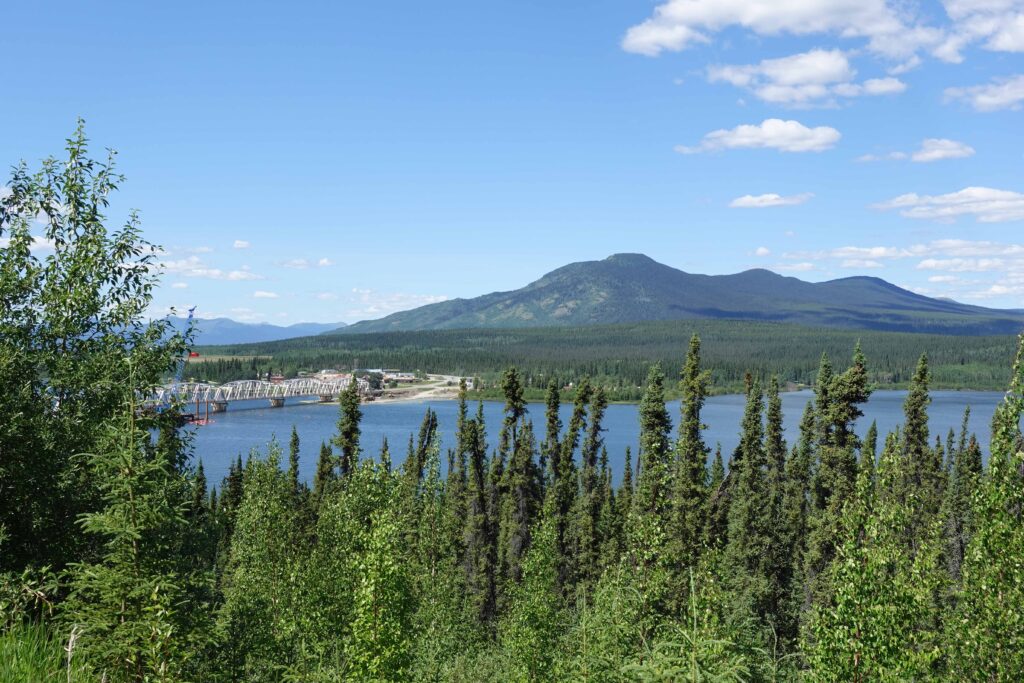
The first “major” town in Alaska is Tok (a two-station metropolis of 1,200 people). In Tok you decide whether you want to go to Fairbanks or to Anchorage. In this respect, Tok is a transportation hub. There are at least 10 cars per hour passing through.
But there is a second way to get to Tok, at least in the summer. That’s when the Top of the World Highway is open, a winding dirt road through the mountains with two American border agents who live up there on the border from May to the end of August.
I wanted to experience at least one of the legendary – truly legendary, not Alaska Highway legendary – highways, and there, after extensive reading, the Top of the World Highway still seemed the safest. It was possible to get through that one without a puncture. That’s what was said. However, it is too dangerous in the rain. That’s what was said. What the highway heroes in Dawson Creek had explained to me.
Why just take the Alaska Highway when you can have it much more complicated on the Top of the World Highway? I was a bit scared (actually petrified).
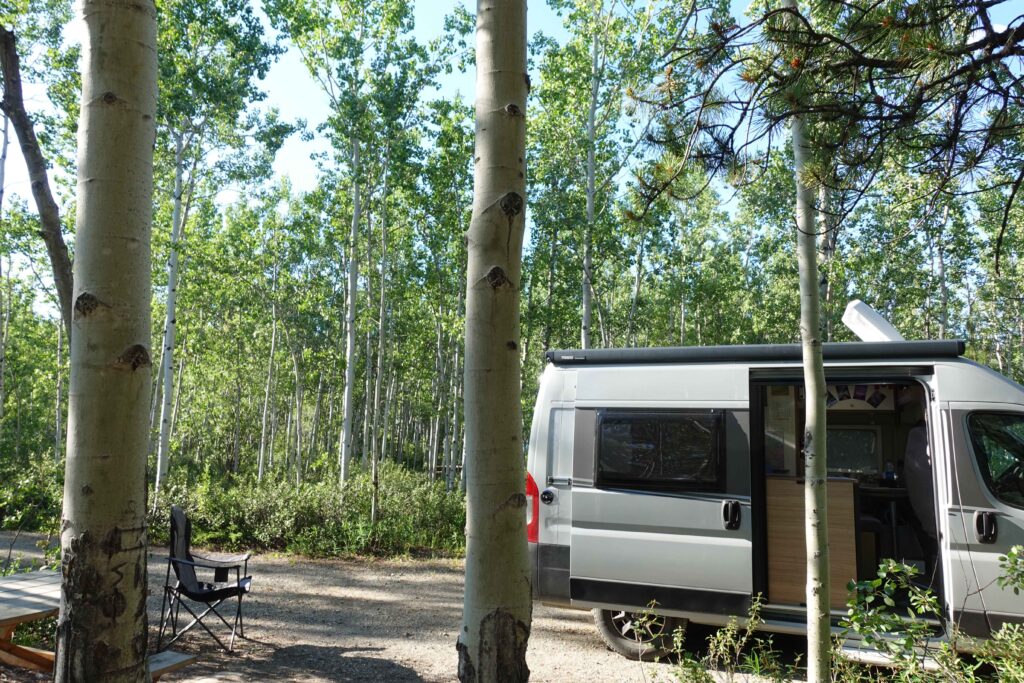

I stayed four nights in Whitehorse because the lady I made a reservation with by phone got the date wrong. I was actually only going to stay three nights, but when I heard there was an extra night reserved, I thought, okay, that’s fine too.
Given the heat wave, I was happy to lodge a bit outside in a forest. Whitehorse turned out to be a delightful little town. The “Klondike”, a paddle steamer from gold mining times, was in dry dock and could be visited, then there were a great museum and an Indigenous cultural center in downtown, plus a mall with interesting offers from the region, from furniture to art to culinary (Mmmh!), and there was the Yukon. Very close to my campground there were the Eclipse Hot Springs, where I spent a wonderful day and managed to get a terrible cold with an air temperature of over 30°C and a water temperature of 33°C that I was pretty much out of order for a week and used up my entire supply of aspirin-C, throat lozenges, nose drops and cough drops. But the ice cream they had there was heavenly. And the walks along the Yukon … a dream!
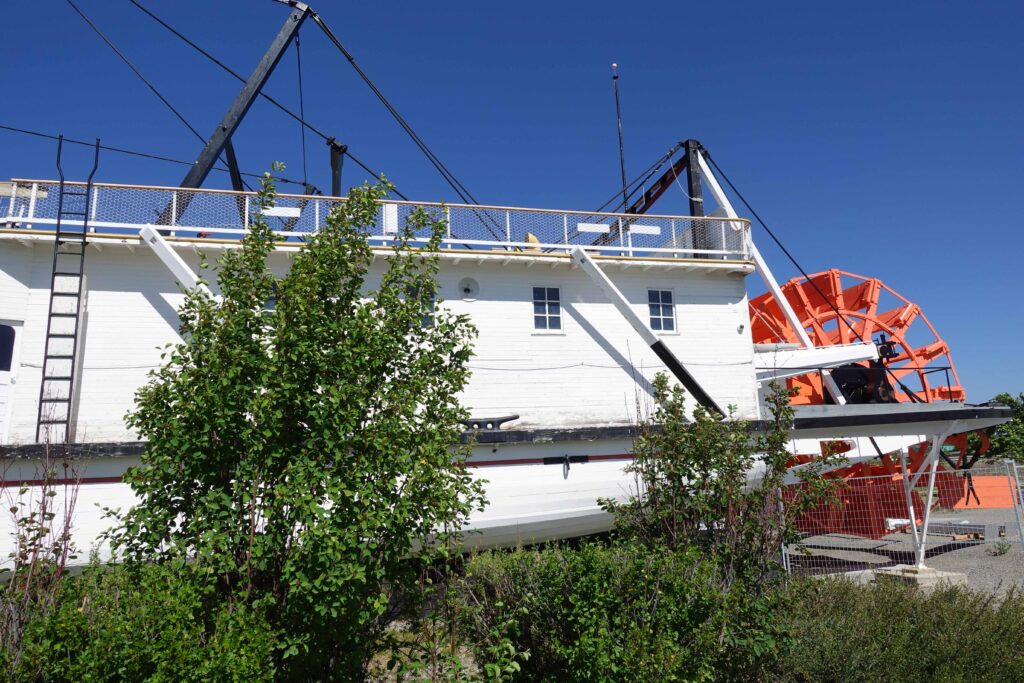
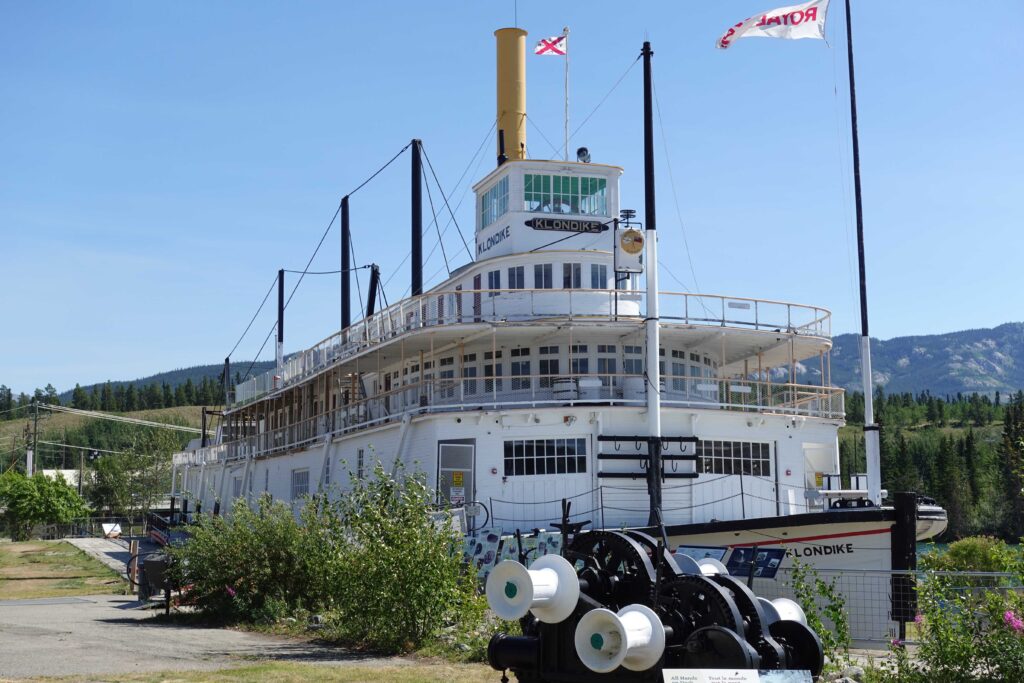
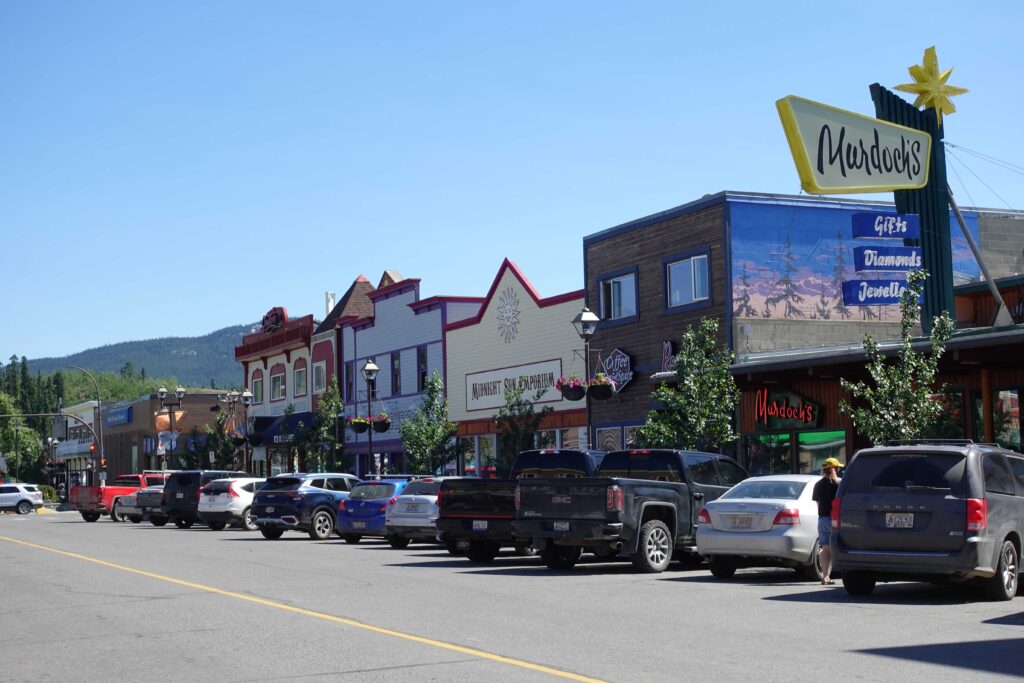
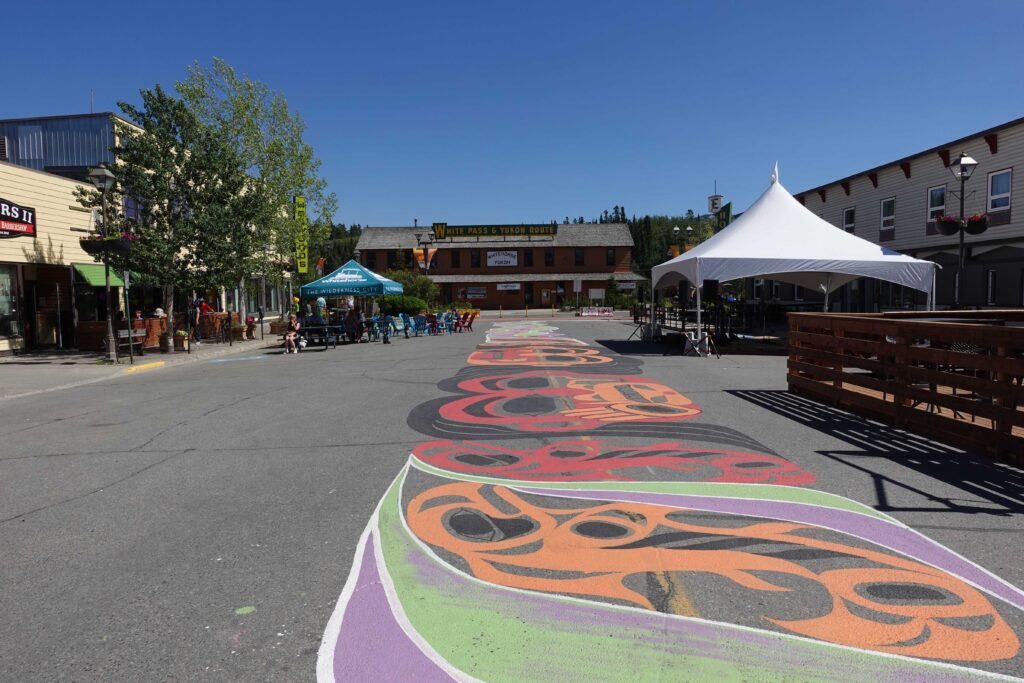

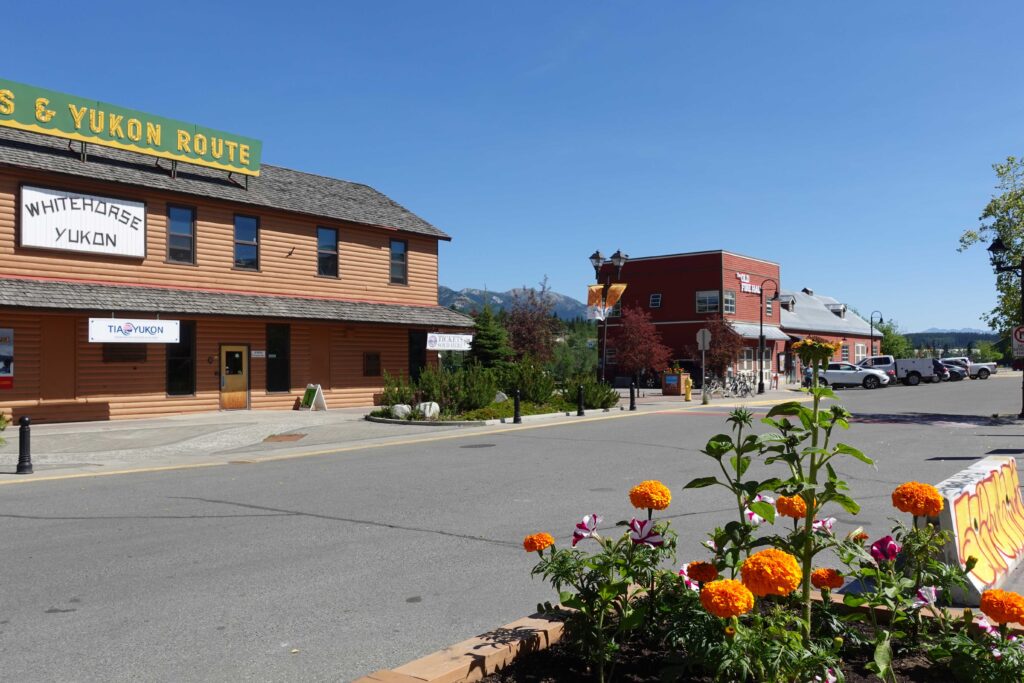
As I was sitting comfortably with my lunch on a bench in the shade on the banks of the Yukon River, two women joined me and asked if I would be willing to share my shaded spot with them. They were from Old Crow, a village of 400 people far north in Yukon Territory. There is no road leading there, so you have to fly. (I later looked it up on Wikipedia, it only mentions 236 people). One of the women left soon, but the other was curious about me – and I about her, so we talked for a while. She radiated such inner calmness and at the same time such unshakable self-confidence, that was something special. She didn’t live in the village, but “just outside” (over 10 km out), and when she went to Old Crow, it was by snowmobile or boat. She hunted Cariboo and made dried meat and bone flour, which she sold. Before retiring, she had worked as an accountant. And now she was in Whitehorse because she needed to withdraw money because her mother in Dawson City had dementia and had to go into a nursing home. But the bank people bitched, so she had sent her lawyer.
I felt like a wealthy chick next to this elemental force of a woman, while she was desperate to learn about my life and thought I was the cool one of the two of us. She definitely made a great impression on me.

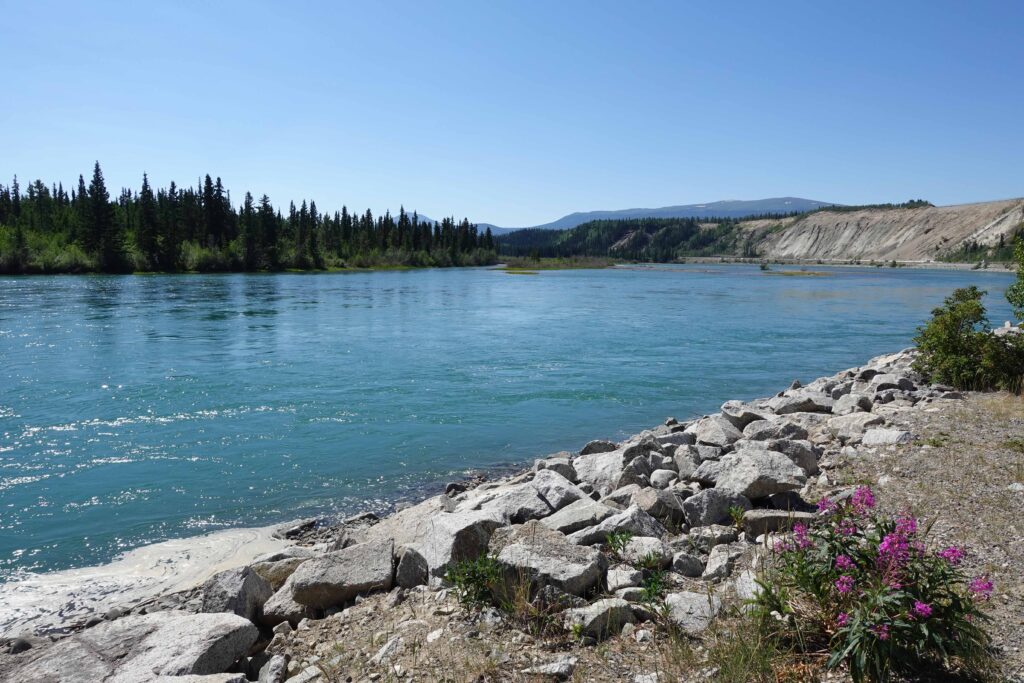
When I googled Old Crow later, it said that artifacts have been found in the area that radio-carbon dating puts at 25,000 to 40,000 years old. And that Old Crow is the northernmost settlement in North America inhabited by First Nations rather than Inuit, and also the only one north of the Arctic Circle. It is located on the Porcupine River and has an average annual temperature of -8°C. Midnight sun is from May 5 to August 8, and polar night lasts from December 14 to 29.
After four nights I said goodbye to Whitehorse with a heavy heart. This is also one of the aspects of travel. You arrive somewhere, you’re a complete stranger, you try to find your way around somehow, and then you either feel comfortable or not so comfortable or especially comfortable. If it’s a place where I really like it, sometimes it’s hard for me to tear myself away. But on the other hand, I want to keep driving – and I also know that I will never come here again. There are many places where I would have liked to stay longer.
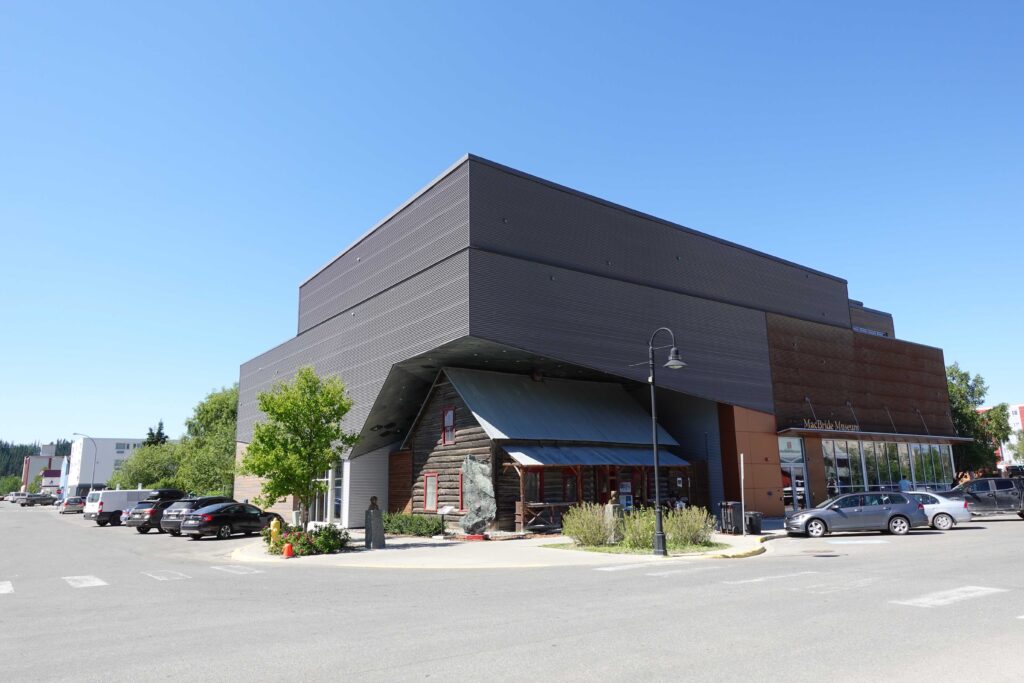

Since the distance to Dawson was too far for me for a one-day journey, I had decided to make a stopover in Carmacks. And that was because I was interested to see how far they would go in mentioning his wife Kate in the place that was named after George Carmack.
Briefly by way of explanation, the gold discovery that triggered the Klondike Gold Rush involved three men, George Carmack, Dawson Charlie and Skookum Jim. It is now known that Carmack’s wife Kate not only arranged for the search to be allowed at Rabbit Creek because she came to an agreement with the locals, but also very likely found the first gold herself. At least that’s what the indigenous people of the area had claimed from the beginning. They have since apologized to Kate Carmack and inducted her into the Gold Rush Hall of Fame in 2019. She got nothing from the wealth, because George left her shortly after the find, and she went away empty-handed. Of course, he had not filed a claim for his wife either. Shaaw Tlaa died in Carcross in 1920 from the worldwide influenza epidemic of the time (“Spanish flu”).
Now, in Carmacks, Kate is not mentioned on the display boards. I asked a local if he knew anything about Kate. He was like, “Oh yes, Shaaw Tlaa, Kitty, – yes, she found the gold.”



When I once again strolled along the Yukon in the evening – the sun would not set – a man was sitting there on a bench and was just taking his dinner. He approached me and invited me to sit with him. He introduced himself as Ukjese van Kampen and was a bush pilot who had been on fire patrol for the past few days. Somehow I was missing something, and when he asked where I was from, he said he always passes Linz when he’s on his way from Vienna to Salzburg. In the hours that followed, I heard the most incredible stories, but also much about First Nation life – in his case, Tetchone – and that he was originally named Neill Smith after his Scottish father, but was then recognized as the reincarnation of his great-granduncle, the shaman Ukjese, and later, as a member of a matrilineal people, naturally took the name of his Dutch wife.
After all, he is also an artist and will soon have exhibitions in the Czech Republic, Spain and Japan. And by the way, he has two doctorates in archaeology and art from European universities. He studied archaeology because no one was systematically studying Indigenous history in the Yukon. So he wrote his first dissertation on it.
I mentioned the totem pole in Whitehorse, where it was about reconciliation because the whites had torn apart indigenous families to re-educate the children – assimilation was the name of the game back then. He said totems were not part of the culture in the Yukon, but had only come up recently because white people were into them – but totems belonged to West Coast peoples. And as for the children sent to mission boarding schools – he doesn’t know a single one in his generation who didn’t experience extreme physical and/or sexual violence there. He himself had been lucky because he was in a public school, so it wasn’t quite as bad.
As a student, he had once talked with two friends about violent crime. One knew a person who had committed suicide, the other told of a serious car accident. Ukjese remembered over 40 people in his circle of acquaintances who had died by suicide or violence. He himself had survived several knife wounds. Then he realized that this situation was abnormal.
Ukjese was born in 1959. He said, “Until 1960, we weren’t allowed to vote, we weren’t allowed to own land, own a business, go to a bar, …” He was the first to start a business in the Yukon, then as a bush pilot. He was also the first indigenous pilot in the country. It took until 2020 that there was finally a female indigenous pilot, namely one of his daughters.
His mother had once been jailed for six weeks as a young woman because her employer had given her alcohol at a party and she was caught by police on her way home.
When two indigenous women passed us, he said, “Look at them, they eat the unhealthy food of the whites, and they are getting fat. We don’t have our food, we don’t have our land, we don’t have our laws, we don’t even have our language anymore. Here in Carmacks, it looks very nice on this side of the Yukon. But on the other side live the Indigenous people. There is violence and a lot of problems there. You can’t take everything away from a people and then think it’s going to be okay.”
When Ukjese said goodbye because he still had to drive to Whitehorse, the sun was still high in the sky, although it was after ten o’clock in the evening. And my head was buzzing a bit from the wealth of information I had received.
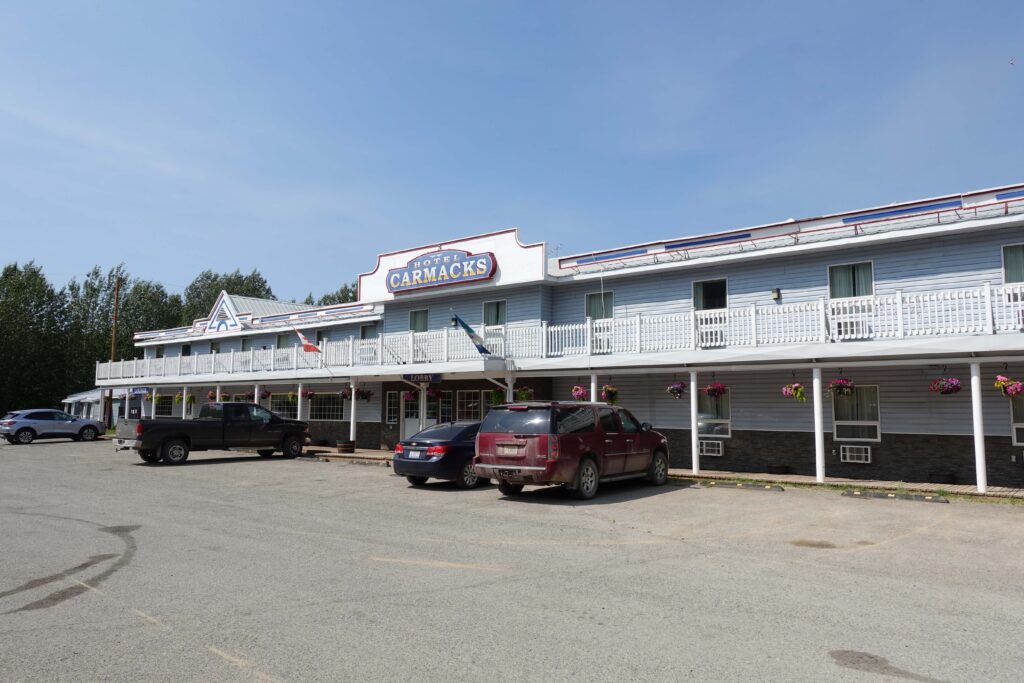
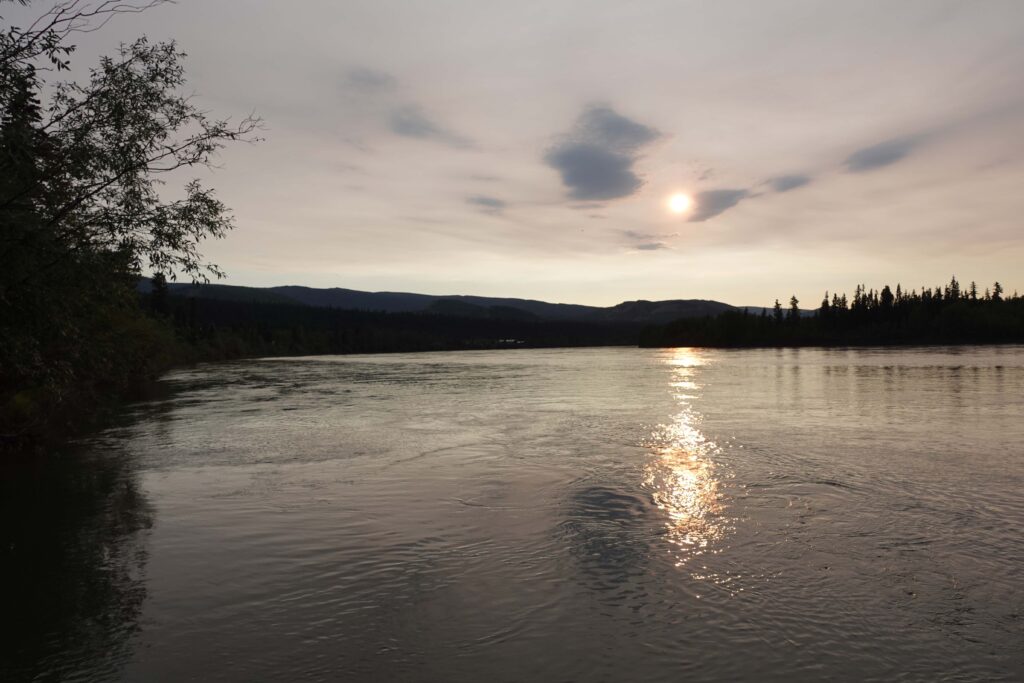
I had noticed that the Indigenous were getting very old, and I had asked him if this impression was correct. He said recently a couple died in his circle of acquaintances, they were married 84 years. Becoming 100 is not uncommon.
The woman from Old Crow had also seemed as if she had been retired for a very long time – and then she had told about her mother, who now had to go to a home.
In any case, I had been lucky enough to meet two special people.
I sat down by the Yukon, looked at the eddies in the water, and watched the sun, which still showed no sign of imminent setting.
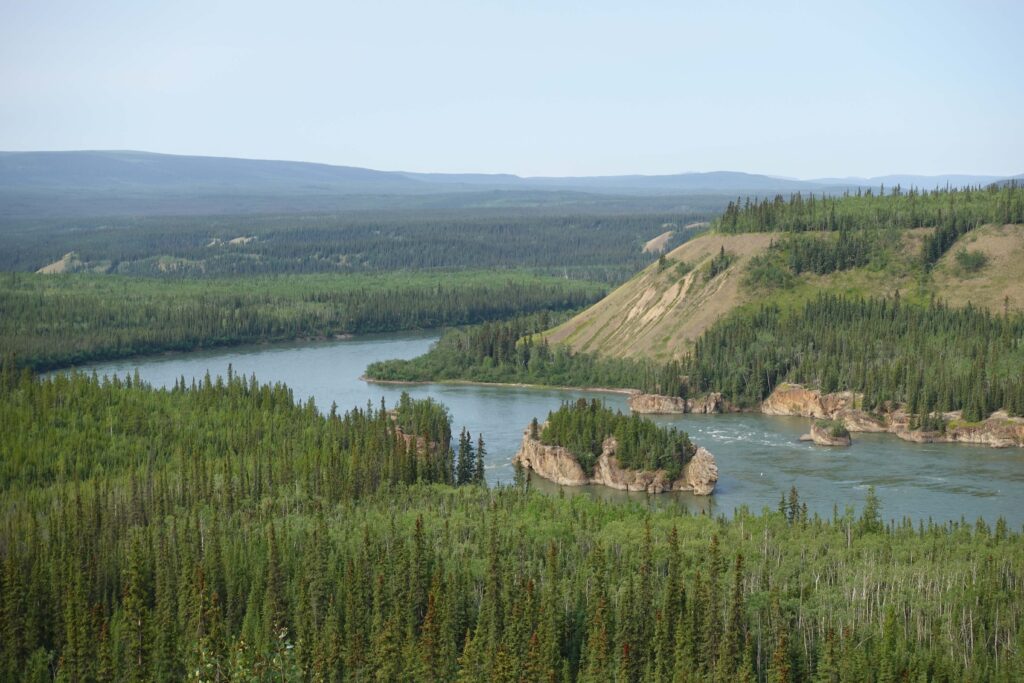
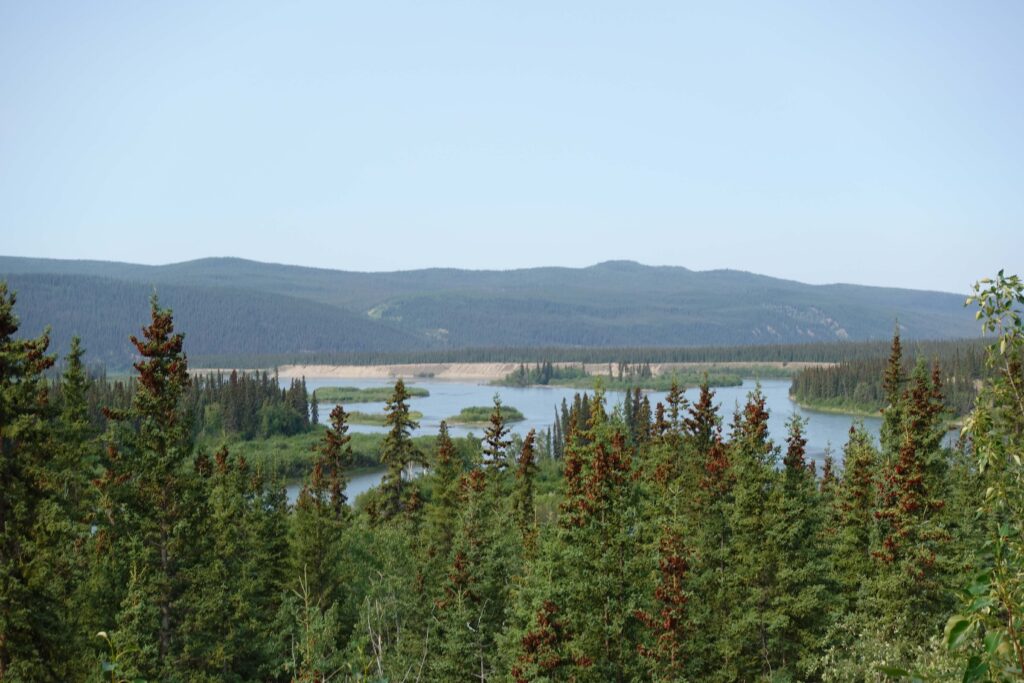
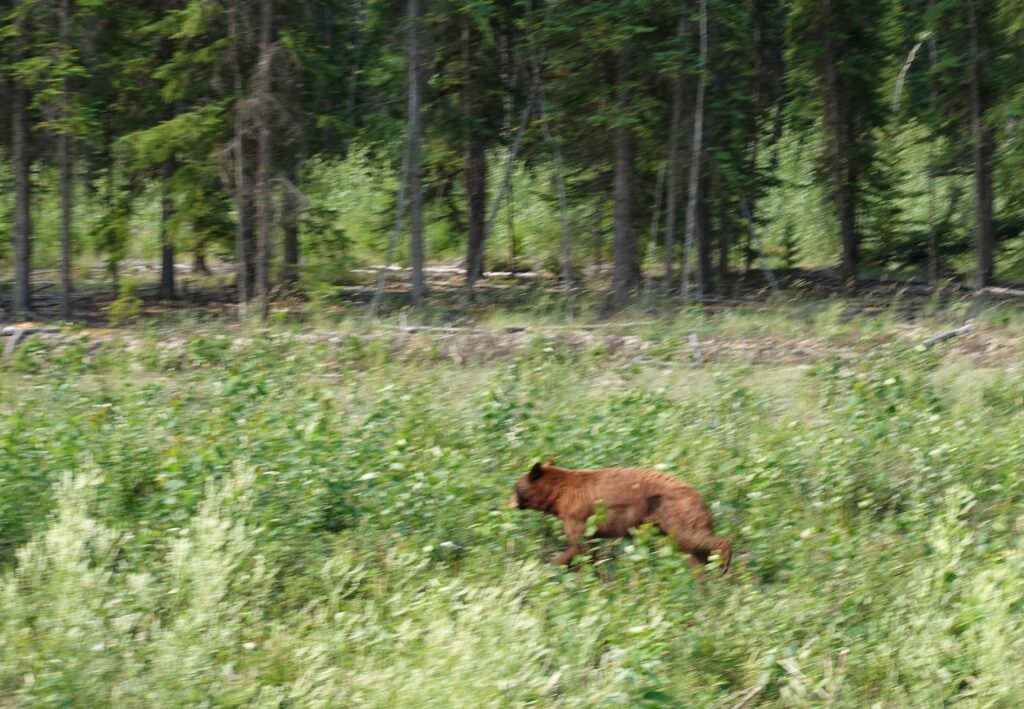

Dawson held me captive from the first moment the next day. While the campground was a bit of a nightmare, the town itself could have been used as the backdrop for a western right away – only the cars would have had to be replaced with horses and carriages.

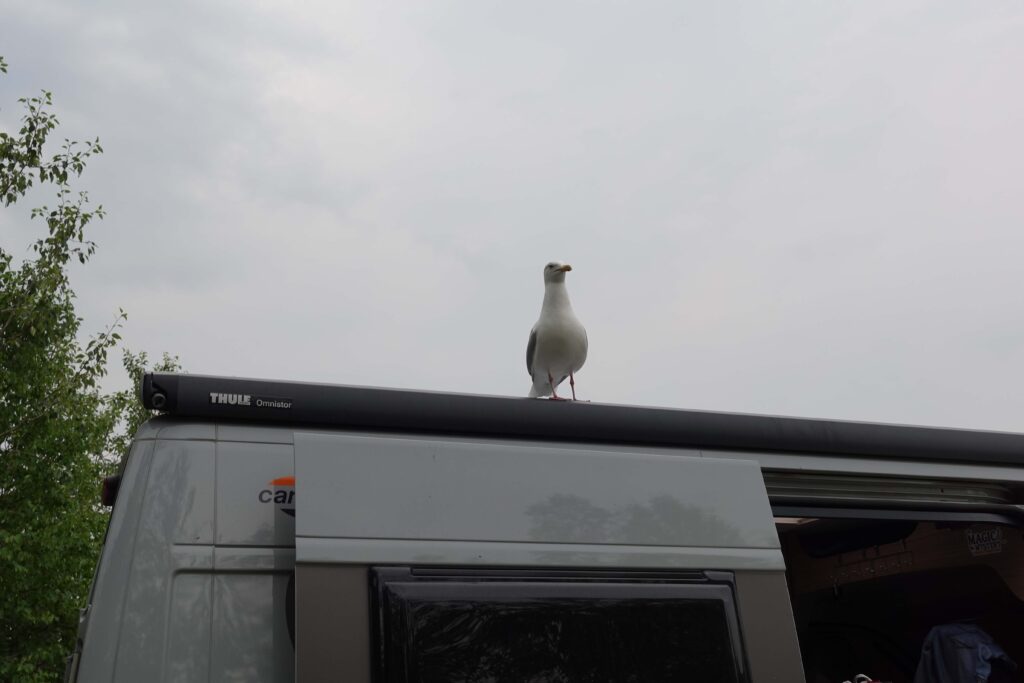

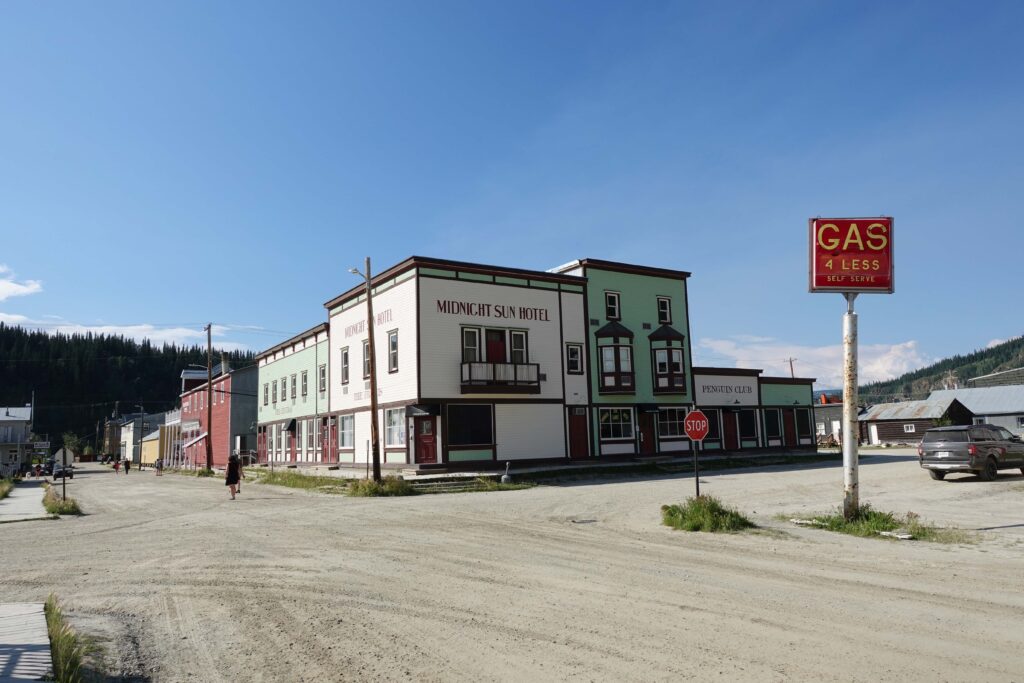

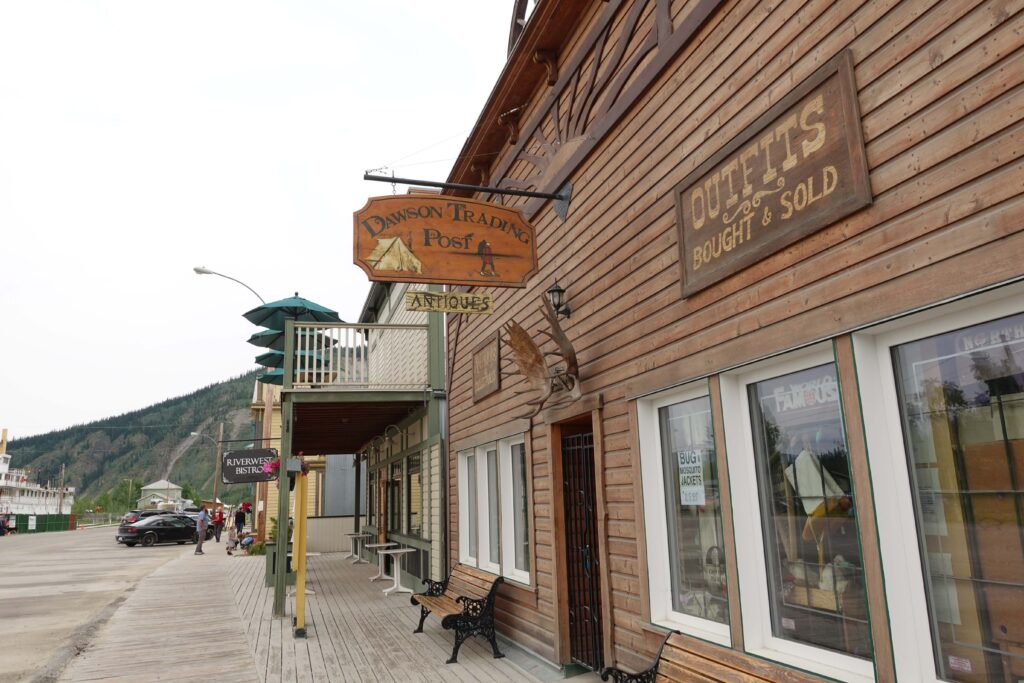
The Klondike carries dark water, while the Yukon collects a lot of silt on its way from Whitehorse to Dawson and comes across as brown. It takes a while for the water of the two rivers to mix. I remembered the confluence of the Rio Negro with the Amazon at Manaus, where they don’t mix for miles because of the difference in temperatures. It was the same here – only the environment was completely different.
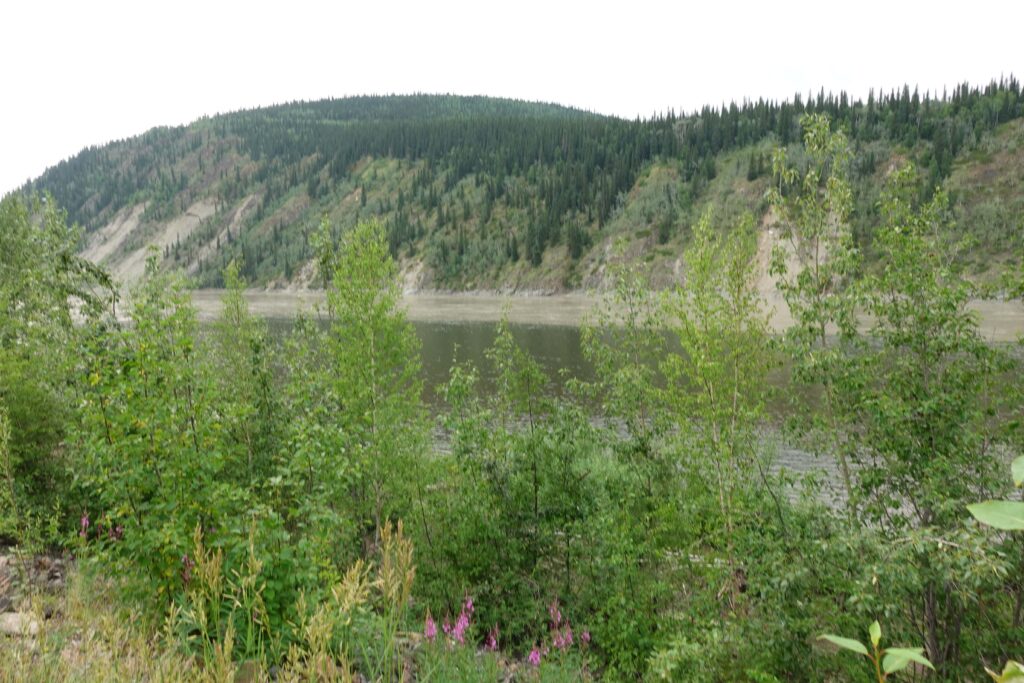
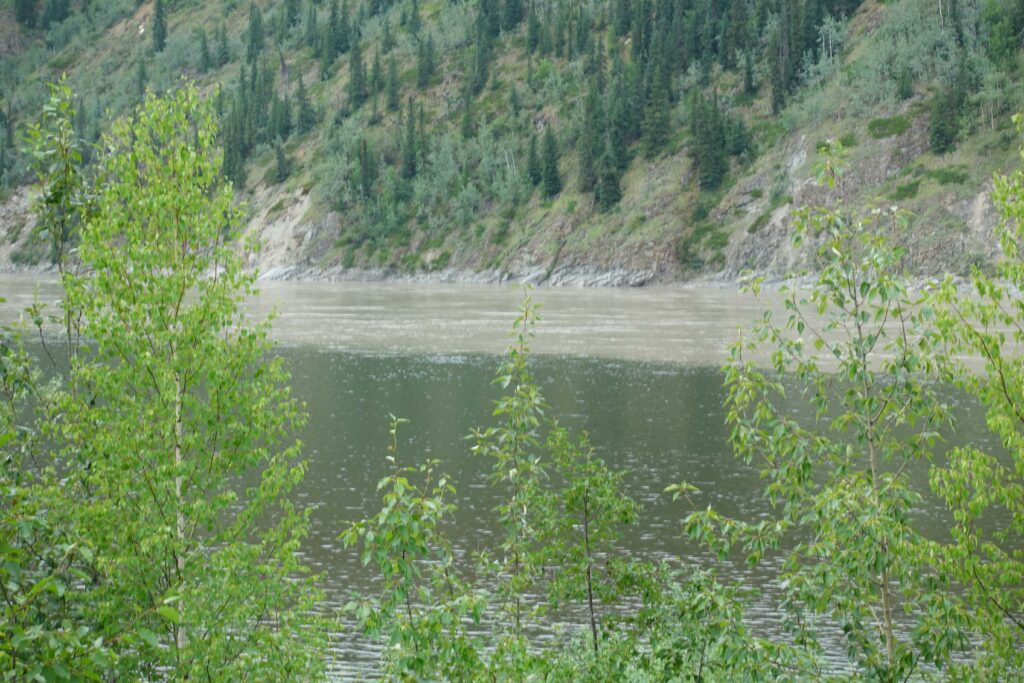
I finally found a hat for hot days, which caused it to start raining. I also got talked into a boat trip on the Yukon – which was great, but completely overpriced. Unfortunately, my cold was also so troublesome that I was somewhat limited because I began to cough and sneeze with every little exertion and every slight breeze.

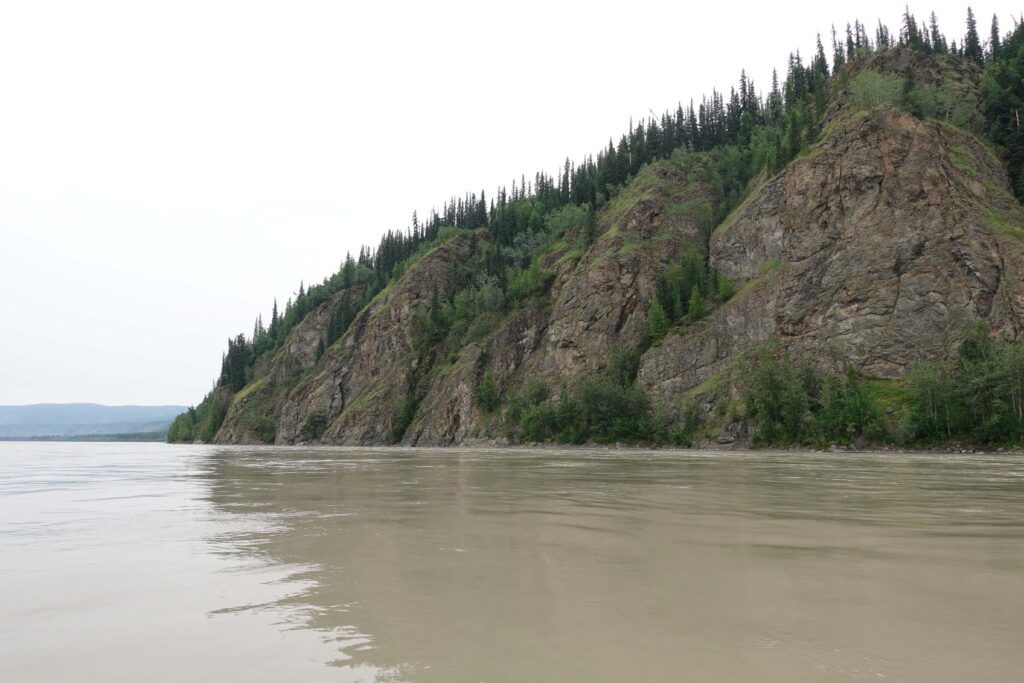
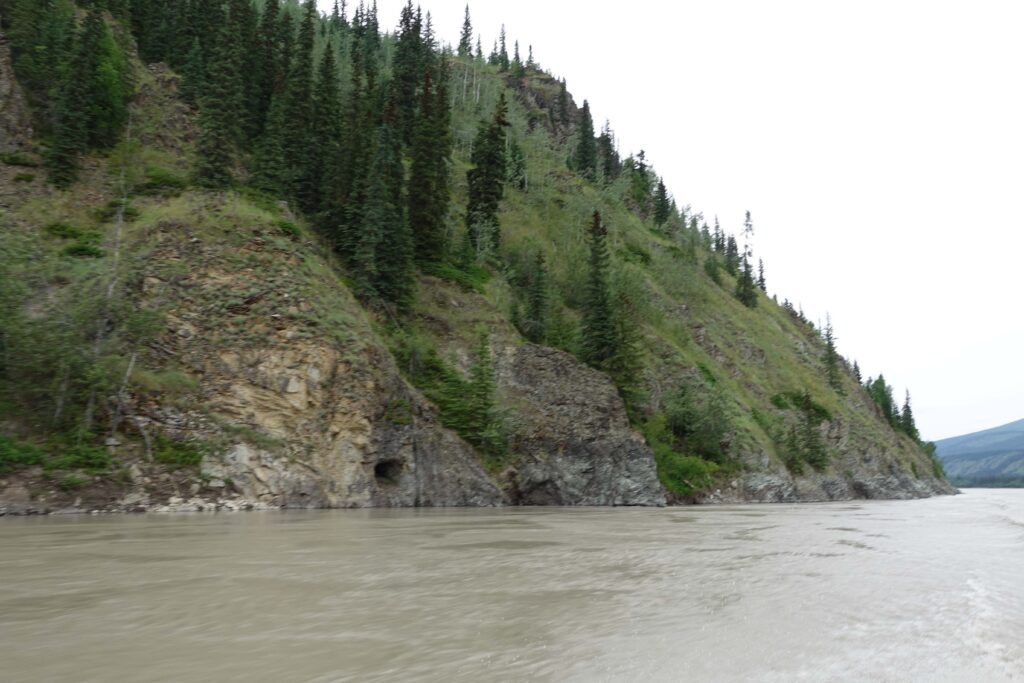
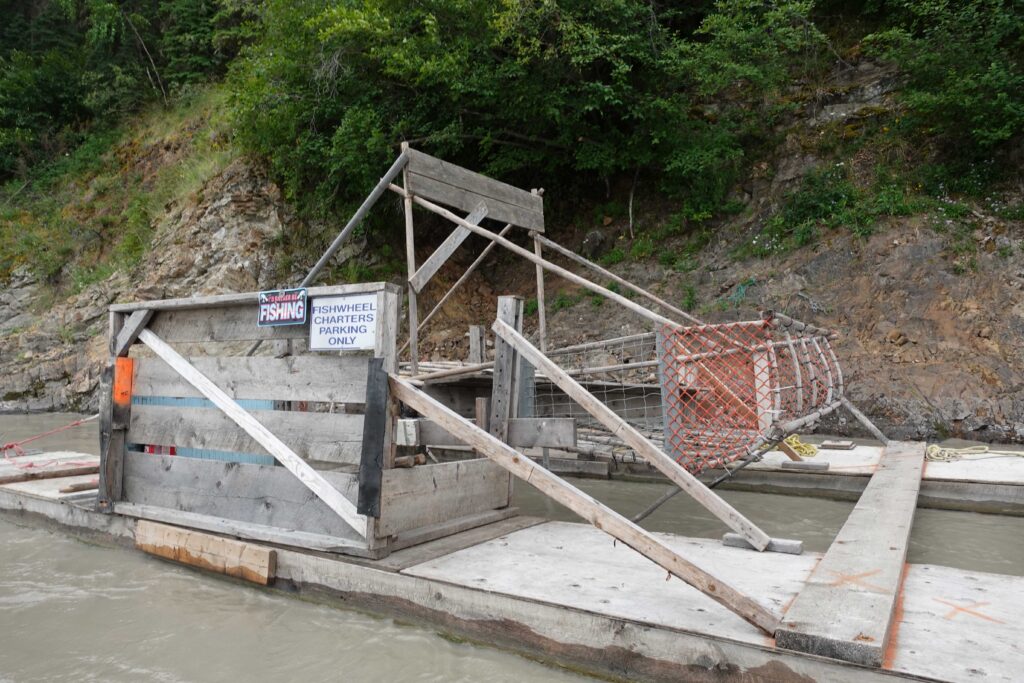
At the Visitor Center I asked if it was possible to drive the Top of the World Highway on Thursday. The lady looked at her weather app and said it wasn’t going to rain, so it wasn’t a problem. Then she gave me an info sheet where it was listed by kilometers exactly how the highway was. Okay, not asphalted … very curvy … no verges or passing places … no protection devices on steep slopes … not passable in the rain … extreme potholes … slippery … even worse the asphalted places with deep cracks and fractures … and finally: corrugations in the ground! The Australian outback sends its regards after all. That was manageable.
What else is there to tell about Dawson? Infinite. Moosehide Slide for example. In the photos you can see that a slope has slid. This has nothing to do with any mines, but this happened at least 1700 years ago.

Much of the city lies on permafrost ground that contains large ice lenses. That’s why all the houses are on stilts, so as not to heat the ground, because otherwise it would sink in. Again and again, the stilts have to be corrected. Water pipes, sewers, etc. are also a very complicated matter.
Dawson was THE Klondike Gold Rush town par excellence from 1887. The pictures of the men who had to bring a year’s supply of food to even be allowed to come to Dawson, trudging through the mountains in single file through snow and ice, are well known. When the gold discoveries became public, 100,000 people set out to find gold at Bonanza Creek. It is also logical that all the mining rights there were awarded very quickly and that those who arrived lived in tents and then eked out a living as unskilled laborers. Dawson grew to between 30,000 and 50,000 people – it’s not really known – and was called the Paris of the North with saloons, bars, hotels, restaurants, tool stores, blacksmith stores, etc. When gold was found in Alaska in 1899, many fortune seekers moved there, others stayed, brought their families here and made Dawson the town they wanted to live in.
I also set off for Alaska …
